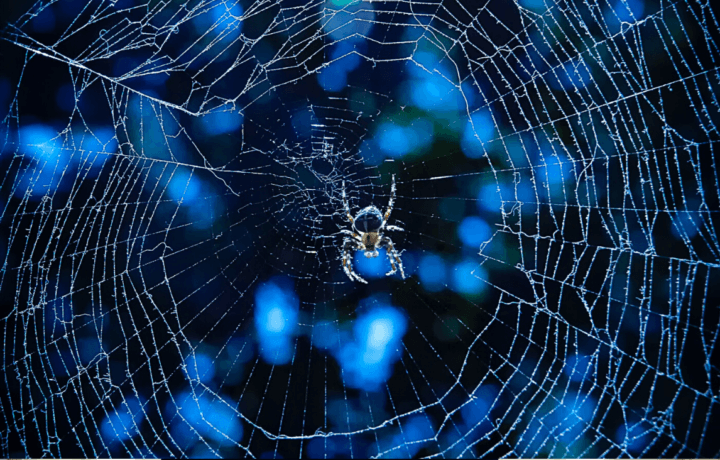We live, as the old song’s refrain from ‘Stand to Your Glasses’ tells us, ‘in a world of lies’. Investigators in the world of classified projects must always seek the truth, no matter where the leads take us. Not too long ago, a series of ‘Top Secret’ documents dealing with the Russian-Ukraine war appeared on X. These were purportedly American. From initial accounts they appeared genuine. In cases like this, I’m reminded of one of the first ‘folk-truisms’ of the investigative world that, “The first report is only 10% correct”. This would mean we need to dig deeper, to find out if the document is true, and if so, how did it get where it did? But then, that would only be half the story, wouldn’t it?
Disinformation Through Influencers
We now have a world dominated by social media. This means, if I have something to say, I can be an ‘influencer’. Influencers used to be the newspapers. People who would spread disinformation often started there. Communist East Germans once fomented a plot to discredit the United States’ CIA. Communist agents planted a bogus story in a friendly Indian sub-continent newspaper. It claimed a CIA-created disease spread when it leaked from its secret American laboratory. That disease was claimed to be AIDS. More intriguing was the successful British plot to deceive the Germans on where the D-Day landing would occur. The British dropped a dead English citizen off the shores of Franco’s fascist Spain. When the body washed ashore, dressed as an English pilot with secret documents, he was turned over to German Abwehr counterintelligence officers in Madrid. The alleged secret maps he held showed the Allies would land at Pas-de-Calais, not Normandy, where they actually did. The Germans believed it.
These new revelations of Top Secret documents were investigated as perhaps the same story in a modern dress. What they do reveal, after we discovered they were leaked by a disaffected serviceman, is something nuanced about our modern age. In the past, most spies stole secrets and passed them clandestinely on to their masters in a given country. They were never public knowledge, unless they were caught. Nowadays, stealing documents is a sport engaged in by not only governments but private information brokers, wealthy thieves, or a cast of other political and other operatives – such as ‘influencers’. Information is power. Information is money. Above all, information gives authority to convey your point of view. Whether the information is true or false, an element of truth is generally essential to make the falsehood believable to those you wish to dupe or impress. The latter seemed to be the case with the recent leaks.
Initial commenters, on background, without authorization, say the discovered documents appeared genuine, but seem altered. That is, in one instance the casualty figures are huge for Ukraine, but minimal for Russia. This might suggest Russian complicity. Why should this matter, if the facts are readily disputable?
steps to follow
When incidents like this occur— if your own organization finds its information compromised and you find yourself having to answer questions from the FBI— there are wise steps to follow. Ask, who is the target audience? We in the West are used to generally well-vetted, double sourced news. Our news services have high hurdles to pass before information is considered credible. Thus, ‘secret’ sources are generally discounted. So who can this ‘revelation’ of Top Secret documents be aimed at? First, the quality of the information revealed must be assessed. Top-secret revelations on twitter and other social media must be carefully assessed by answering the question, ‘Is this even true?’ Remember the East German trick with AIDS. What else needs to happen in a case like this?
Information like this leak can serve to convince those in countries without a free press that the U.S. is engaged in a losing battle with Russia. The effect of non-analyzed documents released secretly can suggest that what America contends in public is not what its own secret documents maintain in private. Secrets on official-looking documents convey that a secret someone cares enough to leak is the truth. The leaker is the unsung hero to those who want to believe the worst about America. All of this can be true before the first step of investigative action to discover the validity of the documents has happened. Soon it will be yesterday’s news, but the thought that, ‘If they lied about this, what else will they lie about?’ will have been planted.
Next Steps
What next? Seas of analysts will comb through endless documents to discover what, if any, validity there is to them. What are they? Where are they from? How could they have been leaked? Are they real, or fake, or a little of both? All of this whirlwind of effort will be driven by a hum of public interest leading the charge. All of this will happen long before the question, ‘Who did it?” is even addressed. Public responses are required, and a host of inquiries must be handled.
All of this is of grave concern to those responsible for classified programs. The mere fact that you work on something the public has no need to know is itself to be protected. Once the work you do gets out, without proper vetting, authorization, and purpose, you will have an avalanche of worry to contend with. Think carefully on how, to whom, and under what circumstances you can discuss programs. Without planning for the worst, it might happen at the worst possible time.


